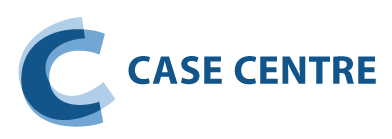


- Not connected
- |
- Login

From On-Premises Software to Software-as-a-Service: Transforming C3 Solutions
Du « sur-site » à la formule « SaaS » – La transformation de C3 Solutions

- French,
- English
- Business model,
- IT infrastructure,
- Software development,
- Cloud-based software
- Modèle d’affaires,
- Infrastructure TI,
- Développement de logiciels,
- Infonuagique
This case describes the evolution of a software development firm’s infrastructure supporting the development, delivery, and operation of applications over two decades. The firm in question is C3 Solutions (C3), a small Canadian software development firm active in a niche market within the transportation and logistics industry. Focusing on the transformation of C3’s business model, the case provides before and after pictures of the infrastructures in place and illustrates the evolution of infrastructures in software development firms.
C3’s success was originally based on the development and sale of on-premises software. Due to pressures originating from within the company and its environment, this business model became difficult to sustain, and the organization’s survival was threatened. In response, C3 carried out a profound transformation of its business model, becoming a provider of software-as-a-service (SaaS). To achieve this transformation, the company had to modify its information technology (IT) infrastructure.
Le cas décrit l’évolution d’une infrastructure utilisée depuis une vingtaine d’années par un producteur de logiciels pour appuyer le développement, la livraison et l’exploitation de ses applications. La société en question est C3 Solutions (C3), petit constructeur de logiciels canadien présent dans un créneau spécialisé du monde des transports et de la logistique. À travers le récit de la transformation du modèle d’affaires de C3, le cas présente un aperçu « avant-et-après » des infrastructures sur site et illustre donc leur évolution chez les producteurs de logiciels.
Le succès de C3 misait, au départ, sur la création et la vente de logiciels sur site. Or, compte tenu des pressions émanant de l’entreprise elle-même et de son milieu professionnel, ce modèle est aujourd’hui moins viable, ce qui remet en cause l’existence même de l’entité. C3 a donc procédé à une transformation en profondeur de son modèle d’affaires, devenant alors fournisseur de logiciels-service (SaaS). Pour y parvenir, l’entreprise a dû modifier son infrastructure informatique.
- Transportation and warehousing
This case centres on the necessary alignment between business model and information technology (IT) infrastructure in the context of software development firms. In particular, it shows how moving from a model of developing on-premises software to a model of software-as-service (SaaS) changes not only the business model but also the technological infrastructure of the software firm.
Le cas concerne la nécessité d’harmoniser le modèle d’affaires et l’infrastructure des technologies de l’information (TI) au sein de sociétés qui produisent des logiciels. Plus particulièrement, il illustre comment la transition d’un modèle de développement de logiciel sur site vers un modèle SaaS vient changer non seulement le mode opératoire, mais aussi l’infrastructure technologique chez les producteurs de logiciels.
This case is aimed at students majoring in IT. Because of its highly technical content, it is best suited to senior undergraduate and graduate-level courses on IT infrastructure at a point when students have acquired a strong grasp of the notion and components of infrastructure. It can also be used in graduate IT outsourcing courses to illustrate the critical differences between two different ways to deliver software to clients.
Objective: Give students insight into the implementation of two different types of IT infrastructure and their ability to support a company’s business model. Students should understand, for example, that becoming a SaaS provider after operating as an on-premises software provider takes time and affects the processes (e.g., build, release) and resources mobilized by the organization to develop and deliver software.
Ce cas vise les étudiants qui se spécialisent en TI. Compte tenu de sa grande teneur technique, il convient le mieux à des cours du premier cycle et des cycles supérieurs portant sur l’infrastructure des TI à un point du parcours où les étudiants ont déjà une bonne compréhension de la notion et des composants de l’infrastructure. Il peut aussi être utile à un cours du deuxième cycle sur la sous-traitance des TI, pour illustrer les différences fondamentales entre deux façons distinctes de fournir des logiciels aux clients.
Objectif : Montrer aux étudiants deux types distincts d’infrastructure de TI, ainsi que la capacité de ces infrastructures de soutenir le modèle d’affaires de l’entreprise. Ainsi, les étudiants devront comprendre que devenir fournisseur SaaS après avoir été fournisseur de services logiciels sur site représente une conversion qui prend du temps et qui a un effet sur les processus (ex. : version temporaire, version officielle) et sur les ressources mobilisées par l’organisation pour mettre au point les logiciels puis les livrer.
- Digital transformation, i.e., the evolution of IT infrastructure and IT architecture
- At the organizational level, SWOT analysis and other such frameworks and tools
La transformation par le numérique – autrement dit, l’évolution de l’infrastructure et de l’architecture des TI. Au niveau de l’entreprise, analyse SWOT (atouts, faiblesses, occasions, menaces), plus d’autres cadres et outils.


